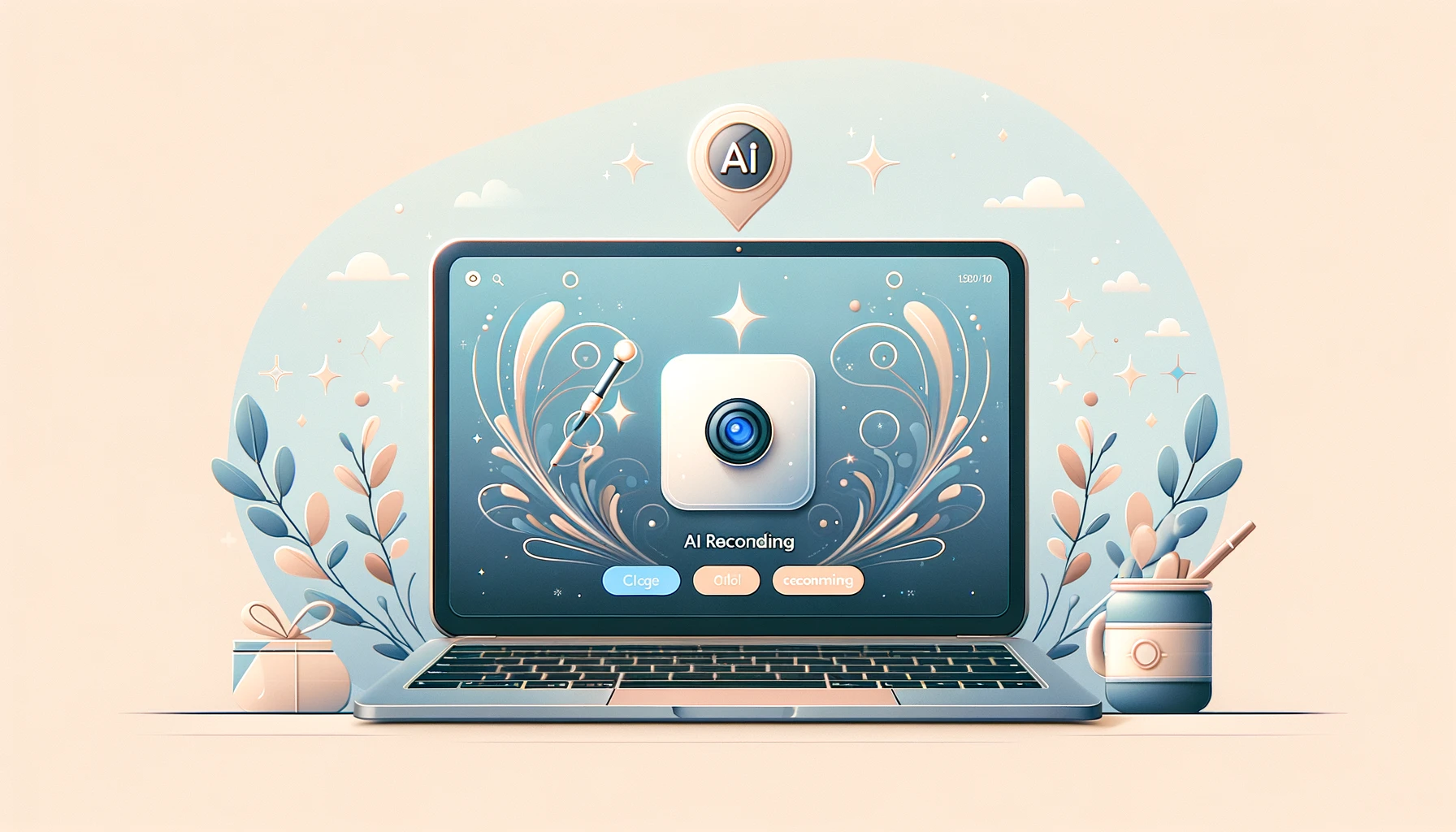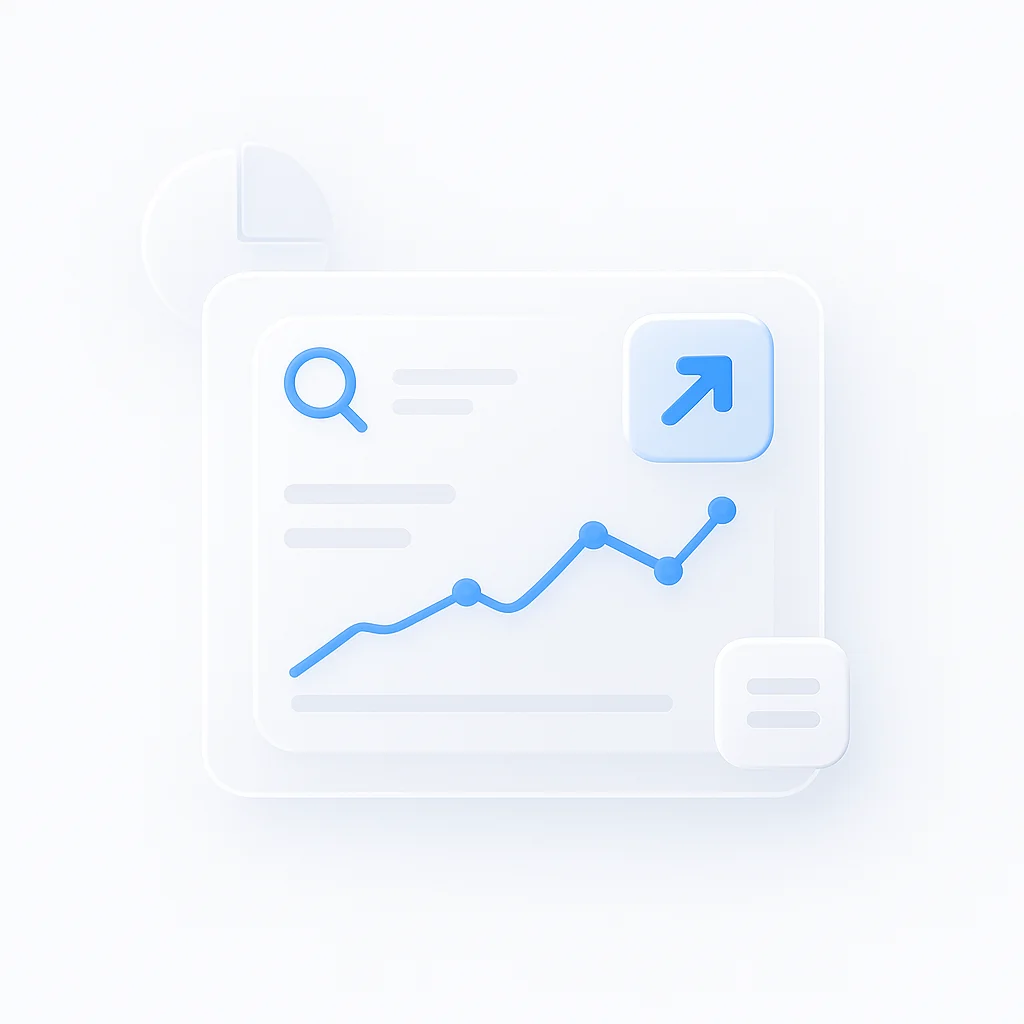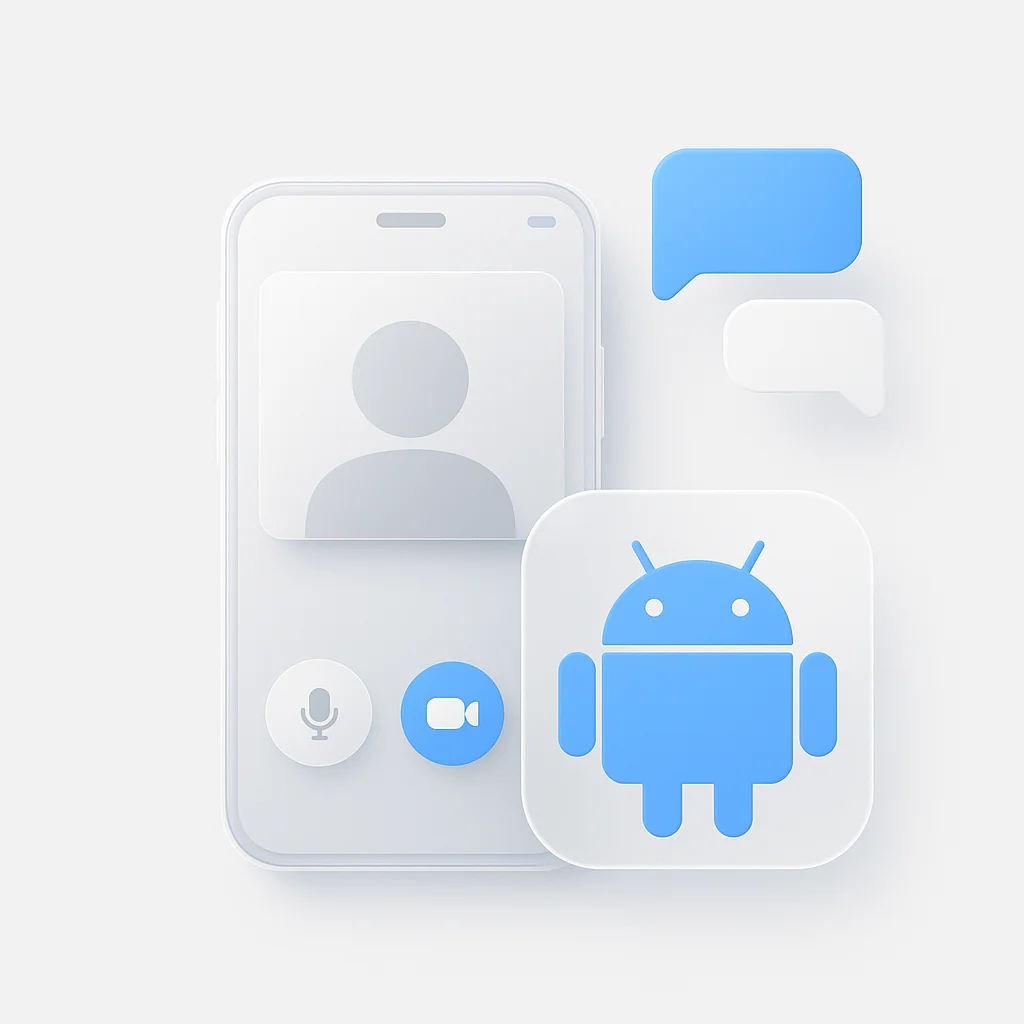AI-powered screen recorders capture video and provide helpful features like transcription and summaries. These tools make recorded content more accessible and useful for anyone working with digital information. For comprehensive comparisons of recording tools, explore our detailed analysis of OBS vs Camtasia for screen recording and video editing, which covers professional content creation capabilities and editing features.
What is an AI Screen Recorder?
Screen recording tools allow us to capture on-screen content for various uses, such as training materials, meeting documentation, or tutorials. AI-powered screen recorders take this further by offering features like:
- Transcription: Converting recorded audio into searchable text.
- Summaries: Providing concise overviews of recorded content.
These features make recorded content more accessible and easier to use. AI-powered screen recorders are valuable tools for educators, content creators, business professionals, and anyone who works with digital content. For additional recording software comparisons, check out our comprehensive comparison of ScreenRec vs OBS for recording needs, which covers different approaches to screen capture and streaming.
This article will explore the top 10 AI-powered screen recorders, outlining their features, benefits, and unique advantages.
Top 10 AI Screen Recorders at a Glance
| Rank | Name | Key Features | Pricing |
|---|---|---|---|
| 1 | ScreenApp AI Screen Recorder | AI transcription, video summarization, editing suite | Free & Paid Plans |
| 2 | Otter.ai | Real-time transcription, speaker identification | Free & Paid Plans |
| 3 | ScreenPal: Screencast-O-Matic | Screen recording, video editing, scripted recordings | Free & Paid Plans |
| 4 | Rev.com | AI & human transcription, captioning services | Pay-per-minute |
| 5 | Loom | Screen recording, video sharing, basic editing | Free & Paid Plans |
| 6 | Descript | AI transcription, text-based editing, overdub | Free & Paid Plans |
| 7 | Camtasia | Screen recording, video editing, interactivity | One-time fee |
| 8 | Zoom | Video conferencing, screen recording, AI transcription | Paid Plans |
| 9 | Sonix | High-quality recording, multilingual transcription | Subscription Plans |
| 10 | Microsoft Stream | Video sharing, AI transcription, security | Microsoft 365 Subscription |
Top 10 AI-Powered Screen Recorders
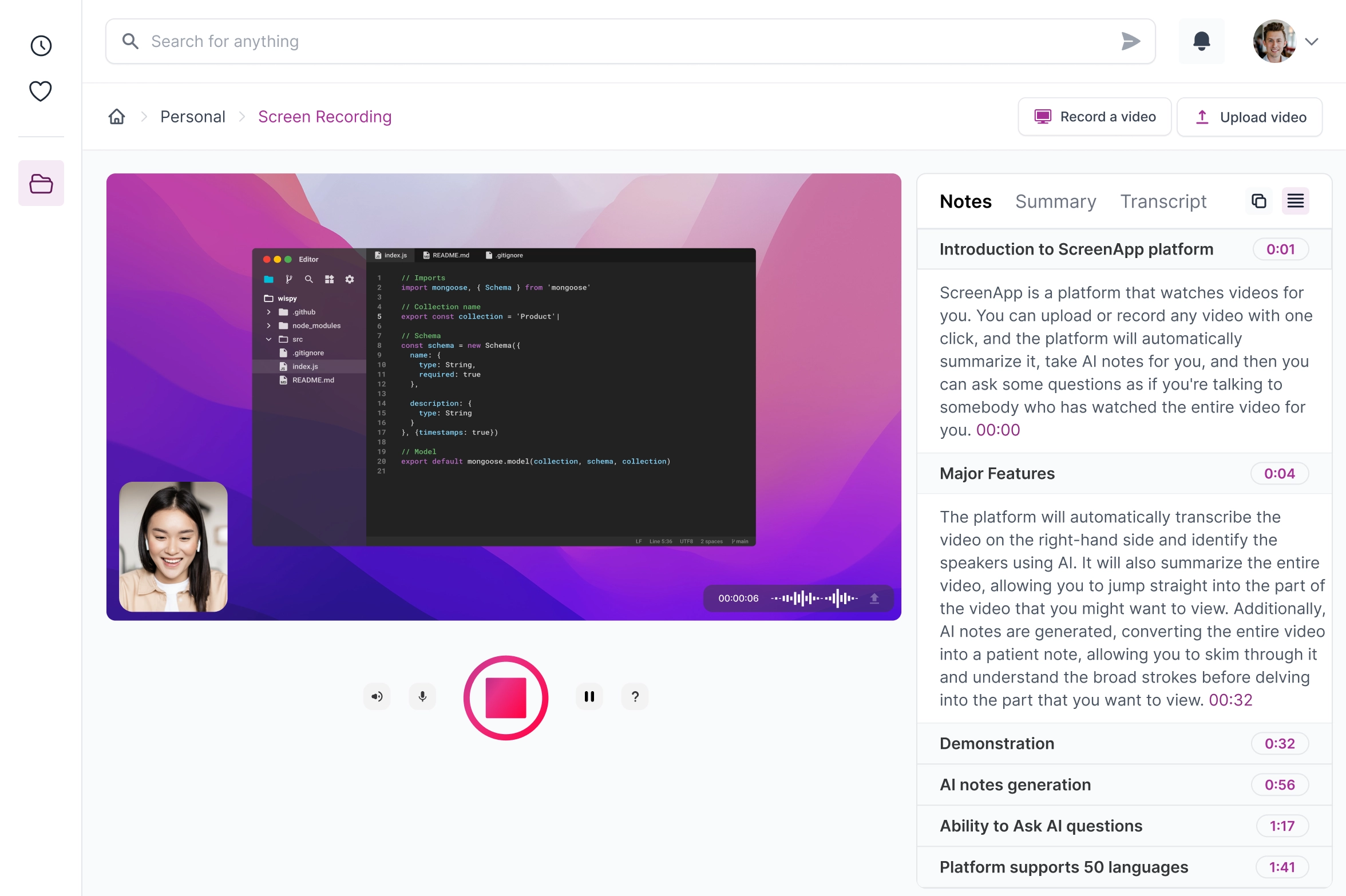
1. ScreenApp AI Screen Recorder
As one of the best online screen recorders of 2024, ScreenApp has introduced AI-driven features that redefine the screen recording landscape. Let’s explore these features, focusing on video transcription, summarization, and the prospective use of AI in ScreenApp.
AI-Driven Video Transcription
ScreenApp’s Video Transcription is more than just a recording tool. Utilizing artificial intelligence services, the transcription feature converts audio from video recordings into text. This technology can serve various purposes:
- Subtitles Creation: Quickly turn spoken words into accurate subtitles for accessibility.
- Content Search: Easily search through the transcribed text to find specific information, creating a searchable database of video content.
- Data Extraction: Extract vital quotes or data for research or content creation without manually sifting through hours of footage.
The AI-driven video transcription not only saves time but opens new doors for video content management and accessibility.
Video Summarization
Another exciting feature ScreenApp offers is AI-powered video summarization. This tool is designed to sift through extensive video content to identify key moments and highlights. Here’s how it transforms the viewing experience:
- Efficient Reviewing: With an automatic summary, viewers can grasp the essence of lengthy videos without watching them in full.
- Content Analysis: By focusing on changes in audio, visual elements, or motion, the summarization feature can pinpoint crucial moments, making content analysis more accessible.
- Content Creation: Create compelling summaries for presentations, reports, or social media sharing, enhancing viewer engagement.
The video summarization feature is particularly useful for professionals who need to digest vast amounts of video data, enabling them to do so efficiently and effectively.
Enhanced Recording Options
Along with these AI-based features, ScreenApp continues to offer extensive recording options:
- Simultaneous Screen and Webcam Recording: Great for tutorials and demonstrations.
- Multiple Screens Recording: Record multiple applications or participants at once.
- Screen Only, Screen + Webcam, or Webcam Only Recording Options: Versatility to meet various recording needs.
- Editing Suite: Intuitive video editing with filters, effects, trimming, merging, and more.
The platform also provides both free and paid versions, with advanced features available in the latter, including video summarization and transcription.
Security and Compliance
ScreenApp’s emphasis on safety and security ensures the responsible handling of data. Encryption and robust compliance with GDPR, CCPA, and HIPAA regulations make it a trustworthy tool for both individual and business use.
ScreenApp’s AI-driven features like video transcription and summarization herald a new era in screen recording technology. These innovations not only enhance usability but provide new ways to leverage video content. Whether for education, business, content creation, or entertainment, ScreenApp’s intelligent recording tools offer a glimpse into the future of digital communication.
2. Otter.ai

Overview and Key Features
Otter.ai is an AI-powered transcription tool that’s highly rated for its accuracy and efficiency. It’s a cloud-based platform that records and transcribes audio in real time, making it a go-to tool for meetings, interviews, lectures, and more.
Key features of Otter.ai include:
- Real-time transcription: Otter.ai transcribes audio in real time. It’s ideal for live events, webinars, and meetings.
- Speaker identification: The tool can differentiate between speakers, making transcriptions easy to read and understand.
- Search functionality: The tool indexes and archives all transcriptions, making it easy to search for specific words or phrases.
- Integration: Otter.ai seamlessly integrates with popular video conferencing tools like Zoom.
Pros:
- High accuracy in transcription, even with technical jargon.
- Excellent speaker identification capabilities.
- Real-time transcription can be a game-changer for live events.
- It offers a generous free plan.
Cons:
- The mobile app has fewer features compared to the desktop version.
- It might struggle with heavy accents or low-quality audio.
Pricing
Otter.ai offers a free plan, which includes 600 minutes of transcription per month. For more heavy-duty users, there’s Otter Pro at $8.33 per month (billed annually) which offers 6,000 minutes per month. There’s also the option of Otter Business at $20 per month (billed annually) which is designed for small and medium businesses and offers additional collaboration features.
3. ScreenPal: Screencast-O-Matic
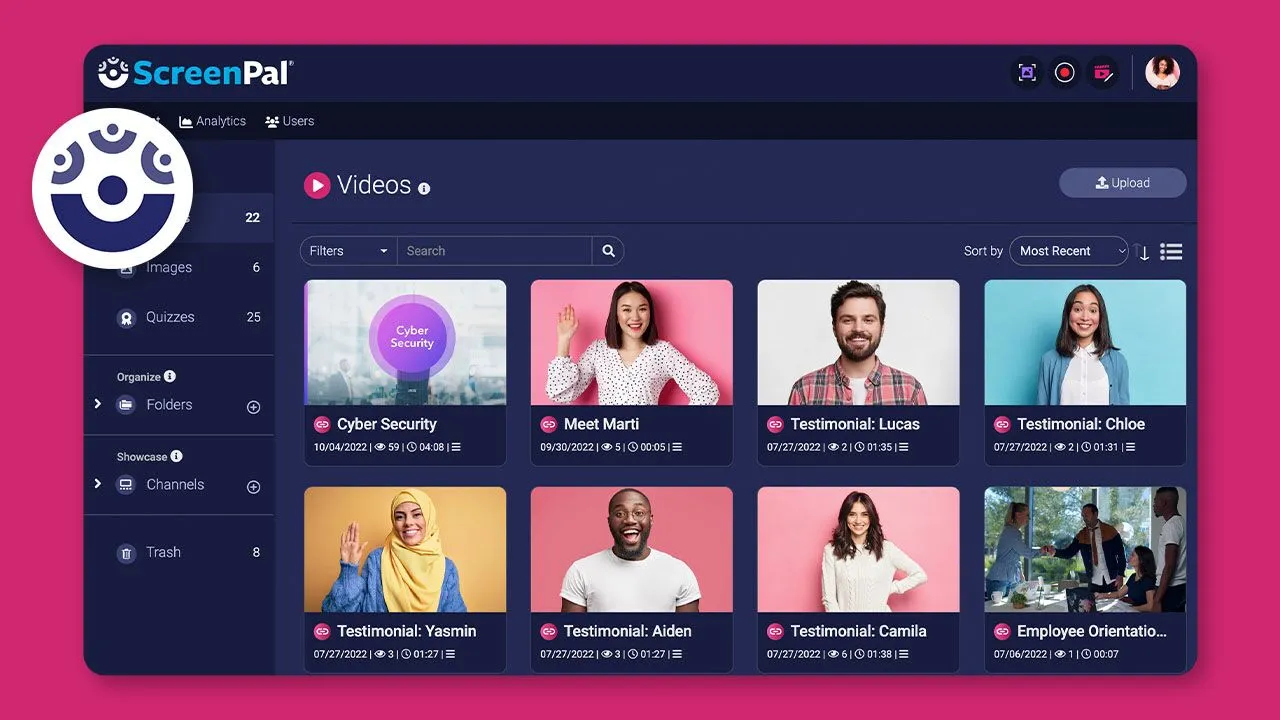
Overview and Key Features
Screencast-O-Matic is a simple and intuitive screen recording tool that’s loved by educators and businesses alike. It combines screen recording, video editing, and video sharing in a seamless workflow.
Key features of Screencast-O-Matic include:
- Screen recording: Capture any part of your screen, webcam, or both. You can also include audio in your recordings.
- Video editing: Add overlays, annotations, or music to your videos. Cut, crop, or add zoom effects to enhance the viewer experience.
- Scripted recordings: Create a script and record it as a voiceover, perfect for narrated presentations and explainer videos.
- Integration with transcription service: Though not natively an AI-powered transcription tool, it offers an integration with SpeechText.AI to provide transcriptions for recorded videos.
Pros
- User-friendly interface, making it easy to use for beginners.
- Versatile screen recording options, including screen, webcam, and both.
- Robust editing features to enhance videos.
- Integration with a transcription service broadens its usability.
Cons
- No native AI transcription service; relies on an external integration.
- Some advanced features are only available in the paid version.
Pricing
Screencast-O-Matic offers a free tier with basic recording and editing features but includes a watermark in the recordings. The Deluxe plan, priced at $1.65/month (billed annually), offers extended recording features and a full-featured video editor. For added features such as secure backup and more, they offer the Premier plan at $4/month (billed annually). The cost of SpeechText.AI integration for transcription services is separate.
4. Rev.com
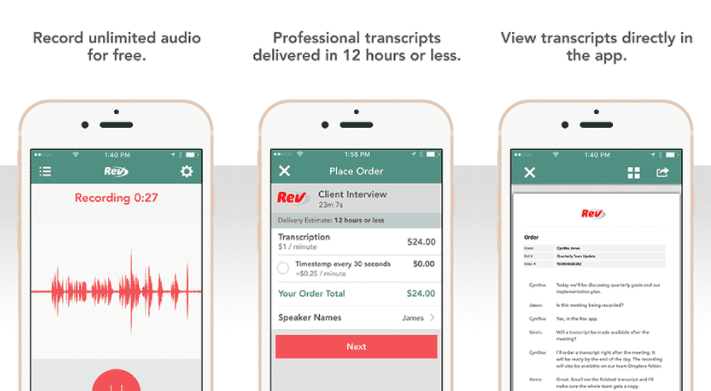
Overview and Key Features
Rev.com started as a transcription service and has since expanded its offerings to include a screen recording tool called Rev Voice Recorder. Rev is known for its high-quality transcription services powered by a combination of AI and human transcribers.
Key features of Rev.com include
- Transcription Services: Rev provides both AI-powered and human-generated transcriptions with high accuracy.
- Foreign Language Support: Rev supports multiple languages, making it a versatile tool for global users.
- Screen Recorder: Rev Voice Recorder can capture audio while you’re recording your screen, ideal for webinars, presentations, and meetings.
- Captioning and Subtitling Services: Beyond transcription, Rev offers captioning services for video, which can make your content more accessible.
Pros
- High accuracy in transcriptions, especially with human transcribers.
- Supports multiple languages.
- Reliable customer service.
Cons
- The screen recorder is a relatively basic tool compared to competitors.
- Transcription services can get expensive, especially human-generated ones.
Pricing
Rev.com’s pricing is primarily based on its transcription and captioning services. AI-powered transcriptions cost $0.25 per minute, while human-generated transcriptions are priced at $1.25 per minute. Captioning services are also available at $1.25 per minute. The Rev Voice Recorder is free to use, but does not include any transcription services in its free version.
5. Loom
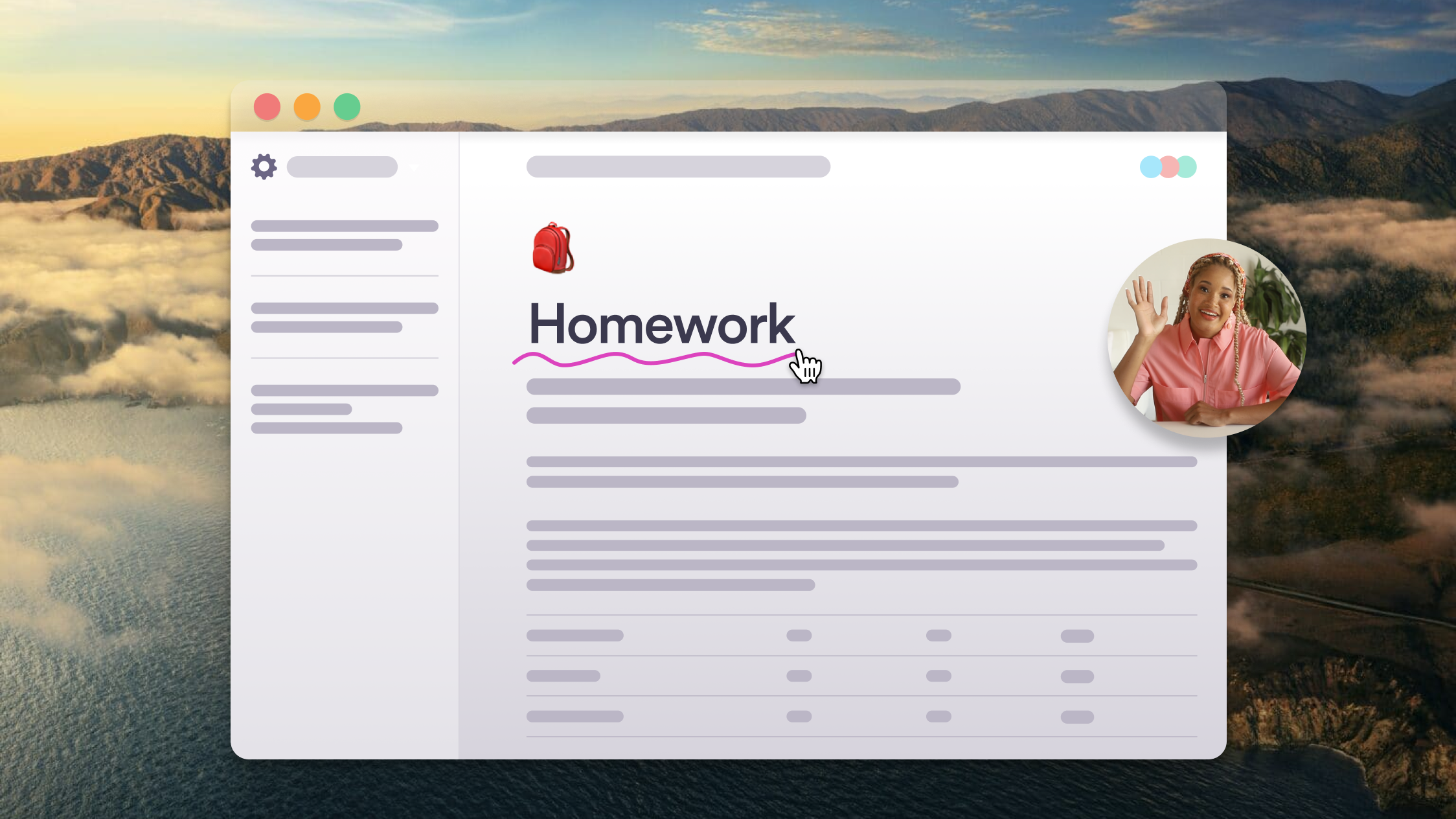
Overview and Key Features
Loom is a user-friendly tool that allows for quick screen and video recording. It’s designed to enable easy sharing of video messages for enhanced communication, particularly in a work-from-home setup.
Key features of Loom include
- Screen Recording: Capture your entire screen, a single tab, or use the front-facing camera. You can record videos with voiceovers for clear, personal communication.
- Video Sharing: Once a video is recorded, Loom provides a shareable link, eliminating the need for large file transfers.
- Video Editing: Basic editing features like trimming are available to fine-tune your videos.
- Integration with Transcription Services: While Loom does not natively offer AI transcription, it allows integration with other services for transcribing videos.
Pros
- The tool is straightforward to use, and ideal for quick video messages.
- It allows for easy sharing of recorded videos.
- It offers a generous free plan.
Cons
- Loom lacks advanced video editing features.
- No native AI transcription service relies on external integration for transcription.
Pricing
Loom offers a free tier with basic video recording and sharing features, with videos stored for up to 7 days. Their Pro plan, at $8/month (billed annually), includes unlimited video storage, more recording options, drawing tools, and videos are stored indefinitely. For larger teams, they offer a Business plan at $12/user/month (billed annually) that includes additional collaboration features and priority support. Transcription services would be an additional cost through an external service.
6. Descript
Overview and Key Features
Descript is a multifaceted tool designed for screen recording, editing, and podcasting. It’s recognized for its unique approach to editing, where you edit audio and video files just like a text document.
Key features of Descript include
- Screen Recording: Descript allows for full or partial screen recording, along with webcam and microphone capture.
- Overdub: This unique feature lets you generate a realistic synthetic voice of yourself, which can be used to correct errors in your recording.
- AI Transcription: Descript offers AI-powered transcription services, converting speech into searchable, editable text.
- Text-based Editing: In Descript, you can edit audio and video files by simply editing the transcribed text.
Pros
- A unique text-based editing approach simplifies the editing process.
- AI transcription is integrated seamlessly into the platform.
- The Overdub feature is a standout offering.
Cons
- The interface may seem non-intuitive for those used to traditional video editing software.
- Advanced features come at a relatively high cost.
Pricing
Descript offers a free plan with basic features and includes 3 hours of transcription. The Creator plan costs $15/month (billed annually) and includes unlimited transcriptions. For additional features such as Overdub and collaborative editing, the Pro plan costs $30/month (billed annually).
7. Camtasia
Overview and Key Features
Camtasia is a renowned screen recording and video editing software. It offers a robust suite of editing tools and is known for its high-quality output.
Key features of Camtasia include
- Screen Recording: Camtasia offers full-screen recording with options for webcam and audio capture.
- Video Editing: Camtasia boasts a rich set of editing tools, including multi-track timelines, annotations, transitions, and animations.
- Interactivity: You can add quizzes and interactivity to your videos to engage your audience.
- Integration with Transcription Services: Camtasia supports integration with transcription services for adding subtitles and captions.
Pros
- Comprehensive video editing features.
- The option to add interactivity enhances viewer engagement.
- High-quality video output.
Cons
- No native AI transcription relies on external integration.
- It may seem overwhelming for beginners due to its broad range of features.
Pricing
Camtasia is available for a one-time fee of $249, which includes updates for a year. Major updates after that may require additional payments. The cost for a transcription service is separate and would depend on the service you choose to integrate.
8. Zoom
Overview and Key Features
Zoom is primarily known as a video conferencing platform, but it also has an inbuilt AI-powered screen recording feature. It allows users to record any ongoing meeting or webinar and save it locally or to the cloud.
Key features of Zoom’s screen recording include
- High-quality recording: Zoom ensures HD video and audio recording.
- Multiple recording layouts: Choose from the speaker, gallery, or shared screen views.
- Automatic transcription: Zoom’s AI will transcribe the recorded video into text.
- Cloud storage: For premium users, Zoom allows cloud storage for recordings.
Pros
- Easy to use with one-click recording during meetings.
- Allows for both video and audio recording.
- AI-powered transcription is very helpful for documentation.
Cons
- Cloud storage and transcription are premium features.
- The quality of the transcription can vary based on audio clarity.
Pricing
While Zoom meetings are free for up to 100 participants, the recording feature is only available for paid versions. The pricing starts at $14.99 per month per host for the Pro plan which includes 1 GB of cloud recording.
9. Sonix
Overview and Key Features
Sonix is an advanced AI-powered platform, primarily designed to transcribe audio and video files, but it also provides a high-quality screen recording function.
Key features of Sonix include
- High-quality recording: Ensures HD video and audio recording.
- Independent audio tracks: Sonix separates each speaker into individual audio tracks.
- In-depth transcription: It provides highly accurate, timestamped transcripts.
- Multilingual: Supports over 35 languages.
Pros
- Very accurate transcription with timestamps.
- The separation of audio tracks for each speaker is a unique feature.
- Supports multiple languages.
Cons
- Screen recording is a less-prominent feature of Sonix.
- The interface can be challenging for new users.
Pricing
Sonix offers a subscription-based pricing model. The Standard plan costs $22 per month and includes unlimited uploads, access to the full suite of tools, and costs $5 per recorded hour. They also offer a free trial that includes 30 minutes of free transcription.
10. Microsoft Stream
Overview and Key Features
Microsoft Stream, part of the Microsoft 365 suite, is a corporate video-sharing service where users can upload, view, and share videos securely. It also offers AI-powered features, like automatic transcription and speaker timelines.
Key features of Microsoft Stream
- Video recording and sharing: You can record, upload, and share videos within your organization.
- Integration: Seamlessly integrates with other Microsoft products like Teams and Yammer.
- AI features: Provides automatic transcription and face detection for videos.
- Security: Ensures video content is securely managed and accessed.
Pros
- Easy to use and integrates with Microsoft’s suite of products.
- AI-powered features like automatic transcription enhances accessibility.
- Provides strong security for your video content.
Cons
- The screen recording feature is not as comprehensive as specialized screen recording tools.
- Only available as part of the Microsoft 365 suite.
Pricing
Microsoft Stream is included in Microsoft 365 subscriptions, which start at $5.00 per user/month. It’s not available as a standalone product.
Personal Recommendation and Reasoning
For businesses seeking a comprehensive AI-powered screen recorder, my personal recommendation would be Zoom. Although primarily a video conferencing tool, Zoom’s built-in recording and AI transcription features make it a robust choice for many businesses, particularly those already using the Microsoft 365 suite. Its ease of use and integration with other Microsoft products make it an efficient tool for managing meetings and webinars, and its automated transcription is an added benefit for documentation.
Tips Using AI Screen Recorders
- Know Your Tool: Understand the key features of your chosen tool and how best to utilize them.
- Integration: If the tool allows, integrate it with other software you use for seamless functionality.
- Training: Ensure all team members are adequately trained on how to use the tool effectively.
- Regular Updates: Keep the tool updated to the latest version to benefit from new features and improvements.
The Future of AI-Powered Screen Recorders
Recent Advancements in AI That Could Impact Screen Recording and Transcription
With the continual evolution of AI, screen recording and transcription services are undergoing remarkable improvements. Recent advancements in AI like Natural Language Processing (NLP) and machine learning have significantly enhanced the accuracy of transcriptions. AI models are becoming more efficient at understanding context, dialects, and accents, which could drastically improve transcription services.
Deep learning, a subset of machine learning, can further improve the quality of screen recordings by optimizing video quality and reducing noise interference. Similarly, advancements in automatic speech recognition (ASR) technology can also enhance transcription accuracy.
Potential Trends and Future Expectations
As AI continues to evolve, we can expect more intelligent and automated screen recorders. This could include more accurate transcriptions, advanced editing features, and seamless integration with other software. AI will also further enhance the user experience, making these tools even more intuitive and easy to use.
In terms of trends, we’re likely to see more AI-powered screen recorders offering real-time transcription and translation, making them invaluable tools in today’s globalized work environment. Furthermore, as remote work becomes more prevalent, the demand for efficient and accurate screen recorders is set to rise.
Specialized Use Cases of AI-Powered Screen Recorders
A. Use in Education
For remote learning and lecture recordings, AI-powered screen recorders have become indispensable. They enable teachers to record lessons and automatically transcribe them, making it easier for students to review the material at their own pace. Transcriptions also help in creating study notes and are particularly beneficial for students with hearing impairments.
B. Business Applications
In the business realm, AI-powered screen recorders are invaluable for recording meetings, webinars, and presentations. The automated transcription feature is particularly useful for creating meeting minutes. Furthermore, by recording and analyzing meetings, businesses can gain valuable insights into employee engagement and meeting effectiveness.
C. Content Creators
For YouTubers, podcasters, and other content creators, AI-powered screen recorders offer several advantages. They can transcribe videos and podcasts, making it easier to create subtitles, show notes, and blog posts. By leveraging services like SERPninja link building service, creators can further enhance their SEO efforts, ensuring that their transcriptions and related content are optimized for search engines. With Ecommerce Link Building strategies, they can improve their online visibility, making their work more discoverable and impactful. For comprehensive video creation solutions, explore our guide to the top 14 AI tools for video production in 2025, which covers advanced AI-powered video creation and editing workflows.
D. Accessibility
Transcriptions and summaries generated by AI-powered screen recorders significantly promote accessibility. They make content more accessible for individuals who are deaf or hard of hearing, or those who prefer reading over watching videos or listening to audio. With more focus on inclusivity, the role of these tools in promoting accessibility will only grow.
Insight into Transcription Accuracy and Technology
The Role of AI and Machine Learning in Improving Transcription Accuracy
Artificial Intelligence and Machine Learning are pivotal in enhancing the accuracy of transcriptions. They allow the software to learn from previous translations and improve over time, identifying patterns, nuances, and even errors in the language. This learning capability is integral to refining the quality of transcriptions, ensuring they are as accurate and contextually correct as possible.
Importance of Language Support
In our increasingly globalized world, multilingual transcription capabilities are essential. AI-powered screen recorders that offer transcription in multiple languages are a significant asset, particularly for international businesses and educational institutions. These tools can automatically translate and transcribe content, breaking down language barriers and fostering more inclusive communication.
Technology’s Limitations
Despite significant advancements, AI transcription technology has its limitations. For instance, recognizing accents or regional dialects can be challenging, as can understanding industry-specific jargon or slang. Furthermore, the transcription accuracy may be compromised if the audio quality is poor or if multiple speakers are talking simultaneously. However, continual advancements in AI and machine learning are helping to mitigate these challenges.
Data Security and Privacy Concerns
Privacy Issues Related to Using AI-Powered Tools
When using AI-powered tools, particularly those that record and transcribe conversations, privacy issues inevitably arise. These concerns often revolve around how the recorded data is stored, who has access to it, and how it’s used. It’s crucial for users to understand a tool’s privacy policy before using it and ensure that it complies with applicable laws and regulations, such as GDPR.
Data Security When Choosing a Screen Recorder
When choosing an AI-powered screen recorder, users should consider the following data security aspects:
- Encryption: Check if the tool uses encryption to protect your data during transit and at rest.
- Access Controls: Ensure the tool provides adequate access controls, allowing you to dictate who can access your recordings.
- Compliance: Check if the tool complies with relevant laws and regulations, such as GDPR or HIPAA.
- Data Usage: Understand how the tool uses your data and ensure it aligns with your privacy expectations.
Customer Support and Community
The Importance of Strong Customer Support
When using AI-powered screen recorders or any software tool, encountering technical issues is almost inevitable. That’s why strong customer support is critical. Prompt and effective customer service can help resolve problems quickly, reducing downtime and frustration. Besides, good customer support often provides tutorials, guides, and FAQs to help users make the most out of the tool.
The Role of Active User Communities
Active user communities play a vital role in enhancing the user experience. Forums, social media groups, or community boards are platforms where users can exchange advice, share tips, and troubleshoot common issues. In many cases, community insights can be invaluable, offering real-world solutions and creative workarounds to enhance the tool’s usage.
User Experience: Layout and Design
The Importance of Intuitive Design and User-friendly Interfaces
The user interface is the first point of interaction between a user and a tool. An intuitive design and user-friendly interface can dramatically improve the user experience, making it easier to navigate the tool and utilize its features effectively. If a tool is challenging to use or its layout is confusing, users are likely to abandon it for a more user-friendly alternative.
Unique or Standout Design Features in the Top 10 List
In the list of top 10 AI-powered screen recorders, several tools have unique design features. For instance, Zoom’s interface is streamlined and intuitive, making it easy even for first-time users to navigate its features. Microsoft Stream stands out for its seamless integration with other Microsoft products, providing a cohesive user experience.
Meanwhile, Grammarly offers real-time suggestions in a non-intrusive manner, ensuring a smooth writing experience. On the other hand, GoTranscript has a unique dashboard design where users can upload files and track the progress of their transcriptions easily.
Integration with Other Tools and Platforms
The Importance of Integration with Common Platforms
The ability of an AI-powered screen recorder to integrate with common platforms like Zoom, Microsoft Teams, and Google Meet is crucial. Integration ensures a seamless workflow, as you can record, transcribe, and share content without having to switch between different tools. This interoperability can significantly enhance productivity and efficiency, making it a key feature to consider when selecting a screen recorder.
Sharing and Exporting Transcriptions and Summaries
Another essential feature is the ability to easily share and export transcriptions and summaries. Most AI-powered screen recorders allow users to export transcriptions in various formats like PDF, Word, or SRT for subtitles. This flexibility makes it easy to share transcripts with team members, use them for future reference, or repurpose the content for different uses.
The Environmental Impact of AI Technologies
The Impact of AI Technologies on the Environment
AI technologies, including screen recorders, do have an environmental impact. AI systems require data centers, which consume considerable energy for computing and cooling. According to some estimates, training a single AI model can emit as much carbon as five cars in their lifetimes. This highlights the need for more sustainable practices in AI technology development and use.
Mitigating Environmental Impact
To mitigate the environmental impact, many tech companies are adopting more sustainable practices. This includes using renewable energy sources for data centers, improving the energy efficiency of their hardware, and developing AI models that require less computing power. Companies are also exploring AI solutions to help predict and manage energy use more effectively.
User Testimonials and Reviews
Analyzing User Reviews
User reviews provide invaluable insights into the real-world performance of AI-powered screen recorders. Analyzing these reviews can reveal strengths and weaknesses that may not be apparent in product descriptions.
Common Praises or Complaints
Common praises often include ease of use, high-quality recordings, accurate transcriptions, and effective customer support. Users appreciate intuitive interfaces, quick response times, and tools that make their tasks easier.
On the other hand, common complaints may include software bugs, difficulty in navigating certain features, and limitations in the free versions of the software. In the case of transcription, some users may find issues with accuracy, particularly when dealing with different accents, low-quality audio, or industry-specific jargon.
Conclusion
Recap of Key Points
This article has taken a deep dive into the realm of AI-powered screen recorders, revealing their increasing significance in today’s digital business landscape. We’ve explored the transformative role of AI in task management, how AI tools function, and their specific benefits for businesses.
We presented an in-depth review and comparison of ten AI-powered screen recorders, discussing their key features, pros and cons, and pricing. This comparison highlighted the diversity of these tools, each with its unique strengths, from Zoom’s intuitive interface and Microsoft Stream’s seamless integration with other Microsoft products to Sonix’s high-quality transcription capabilities and GoTranscript’s support for multiple languages.
We’ve also touched upon the importance of user-friendly design, robust customer support, and interoperability with other platforms. Moreover, we’ve reflected on the environmental impact of AI technologies and the necessity for companies to adopt more sustainable practices.
FAQ
What is an AI-powered screen recorder?
An AI-powered screen recorder is a tool that not only records screen activities but also uses Artificial Intelligence to offer features like automated transcription, intelligent editing, and in-depth analytics.
Why are AI-powered screen recorders important for businesses?
AI-powered screen recorders enhance productivity by automatically transcribing recorded meetings or presentations, providing analytics, and integrating with common platforms like Zoom and Microsoft Teams.
What are some of the top AI-powered screen recorders?
Some of the top AI-powered screen recorders include Zoom, Sonix, Microsoft Stream, and GoTranscript. These tools offer a range of features from high-quality recordings and accurate transcriptions to seamless integrations with other platforms.
How can AI-powered screen recorders improve task efficiency?
AI-powered screen recorders improve task efficiency by automating the transcription process, providing searchable and editable transcripts, and offering easy sharing and exporting of transcripts and summaries.
What should I consider when choosing an AI-powered screen recorder?
When choosing an AI-powered screen recorder, consider factors such as recording quality, transcription accuracy, integration with other platforms, user interface, customer support, data security, and pricing.
Are there any environmental impacts of using AI technologies like screen recorders?
Yes, AI technologies require data centers that consume significant energy. However, many tech companies are adopting sustainable practices like using renewable energy sources for data centers and developing AI models that require less computing power.
How do AI-powered screen recorders support accessibility?
AI-powered screen recorders support accessibility by providing accurate transcriptions of recorded content, making information more accessible to people with hearing impairments or those who prefer reading over listening.
Are AI-powered screen recorders secure to use?
Yes, most AI-powered screen recorders prioritize data security and privacy, offering features like end-to-end encryption and stringent data handling policies. However, users should always review the privacy policies of these tools to ensure their data is adequately protected.
Can AI-powered screen recorders be used for remote learning and education?
Yes, AI-powered screen recorders are an excellent tool for remote learning and education. They allow teachers to record and transcribe lessons, making it easier for students to review material at their own pace and ensuring accessibility for all learners.
How does AI-powered screen recorders benefit content creators?
AI-powered screen recorders aid content creators like YouTubers and podcasters by providing accurate transcriptions of their videos and audio content. These transcriptions can be used to create subtitles, improve SEO, and repurpose content for different mediums.
How does AI improve the accuracy of transcriptions in screen recorders?
AI improves the accuracy of transcriptions by learning from previous translations, identifying patterns and nuances in the language. Advances in machine learning and natural language processing have significantly enhanced transcription accuracy in AI-powered screen recorders.
How does integration with other platforms enhance the functionality of AI-powered screen recorders?
Integration with other platforms allows AI-powered screen recorders to work seamlessly within an existing workflow. For instance, integration with video conferencing platforms like Zoom or Microsoft Teams makes it easy to record, transcribe, and share content without having to switch between different tools.
What are some common challenges when using AI-powered screen recorders and how can they be handled?
Common challenges when using AI-powered screen recorders can include technical issues, data security concerns, and accuracy of transcriptions. These can be handled by having dedicated IT support, choosing tools with robust security features, and proofreading AI-generated transcriptions.
What does the future hold for AI-powered screen recorders?
The future of AI-powered screen recorders looks promising with continuous advancements in AI. We can expect more intelligent and automated screen recorders with more accurate transcriptions, advanced editing features, and seamless integration with other software. Real-time transcription and translation are also likely to become more prevalent. For broader video summarization capabilities, explore our detailed review of the 10 best video summarizers, which covers AI tools for processing and analyzing video content alongside recording capabilities.
